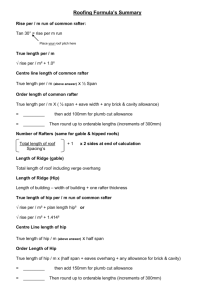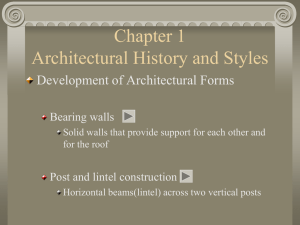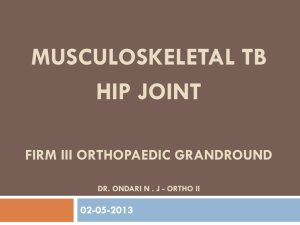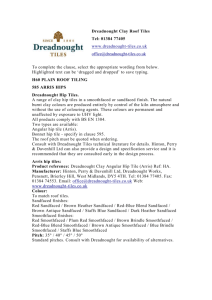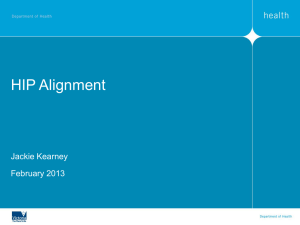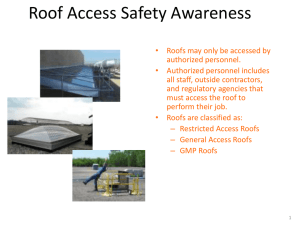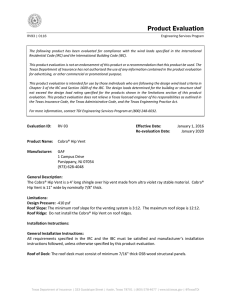View Hip Roofs and Intersections PowerPoint Presentation
advertisement
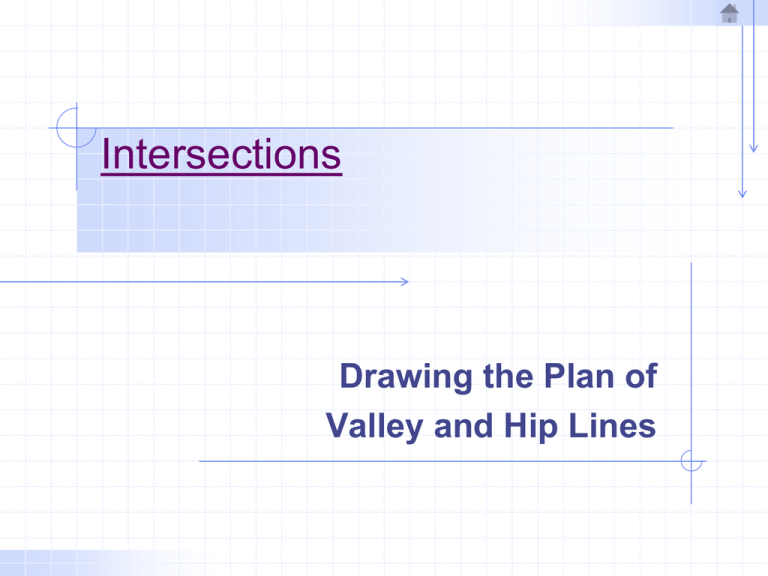
Intersections Drawing the Plan of Valley and Hip Lines Hip Roofs When the slopes are equal and the heights of the eaves for two intersecting roof surfaces are the same, in plan the line between these two surfaces bisects the angle formed by their eave lines. This applies to both the hip and the valley lines between two adjoining roof surfaces, regardless of the slope or the pitch, as long as they are the same for both surfaces. When these conditions exist, and the eave line of the building is shown in plan, the hip, valley, and ridge lines may all be drawn in the plan without knowing anything about the pitch or slope, the height of the eaves, or the height of the ridge of the building. Hip Roofs Figure (A) and Figure (B) show two houses whose roof plans are Identical in spite of the difference in their roof slopes as shown in The elevations. Hip Roofs Given a simple rectangular outline of a plan view of a hip roof in Figure (C) The angles at the corners of the eaves are bisected (Figure (D)) forming The hip lines. Near each end of the building the two hip lines meet in a point at the highest Level of the roof forming the beginning of the ridge line. Hip Roofs Given the plan view of the eave line of a building with a wing added Figure (E). The large rectangle is completed and the roof plan for that part of the Building is drawn as show in Figure (F). Another rectangle is blocked in with its width equal to the width of the Wing as shown in Figure (G). Figure (H) shows all of the lines on the combined roof including the Valley line formed where the two roofs intersect. Hip Roofs Drawing the plan view of a hip roof on any building Intersections Finding the Intersection of a line and plane using A horizontal cutting plane Intersections Finding the Intersection of a line and plane using A vertical cutting plane
